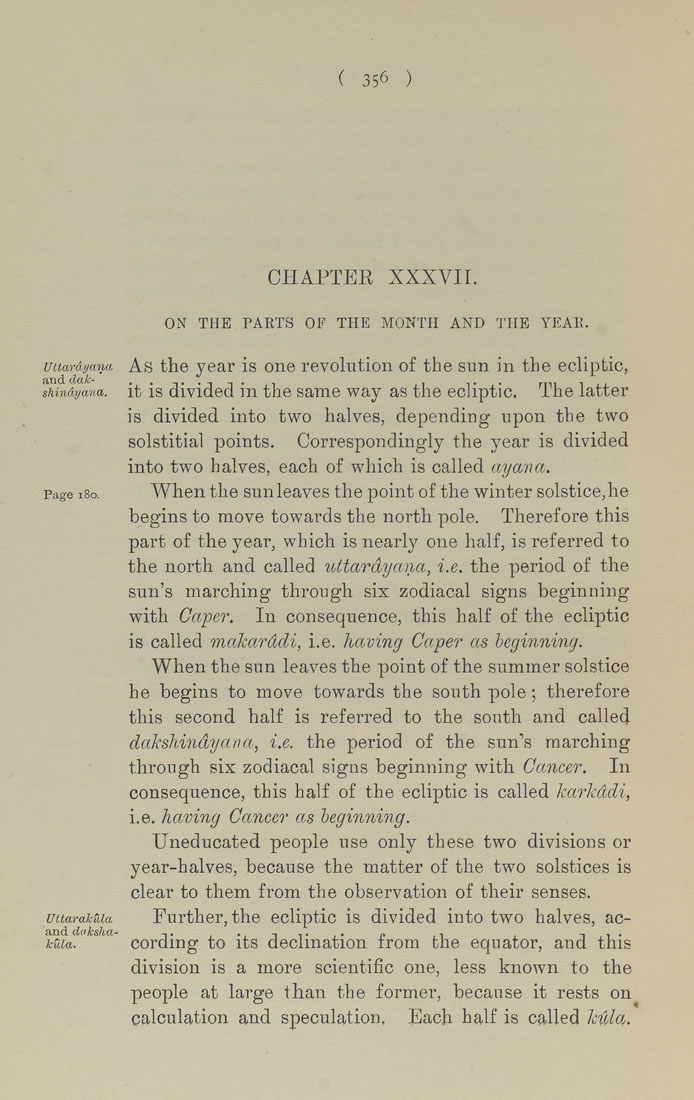Bīrūnī, Muḥammad ibn Aḥmad, Alberuni's India (v. 1)
(London : Kegan Paul, Trench, Trübner & Co., 1910.)
|
||
|
|
|
|
| Page 356 |

( 356 ) CHAPTEE XXXVII. ON THE PAETS OF THE MONTH AND THE YEAE. uttardyana As the year is one revolution of the sun in the ecliptic, shindyana. it is divided in the same way as the ecliptic. The latter is divided into two halves, depending upon the two solstitial points. Correspondingly the year is divided into two halves, each of which is called ayana. Page i8o. When the sun leaves the point of the winter solstice, he begins to move towards the north pole. Therefore this part of the year, which is nearly one half, is referred to the north and called uttardyana, i.e. the period of the sun's marching through six zodiacal signs beginning with Caper. In consequence, this half of the ecliptic is called makarddi, i.e. having Caper as beginning. When the sun leaves the point of the summer solstice he begins to move towards the south pole ; therefore this second half is referred to the south and called dakshindyana, i.e. the period of the sun's marching through six zodiacal signs beginning with Cancer. In consequence, this half of the ecliptic is called karkddi, i.e. having Cancer as beginning. Uneducated people use only these two divisions or year-halves, because the matter of the two solstices is clear to them from the observation of their senses. uttaraicvM Further, the ecliptic is divided into two halves, ac- kuia. cording to its declination from the equator, aud this division is a more scientific one, less knoAvn to the people at large than the former, because it rests on calculation and speculation. Each half is called kitla. |
| Page 356 |







